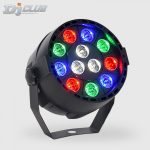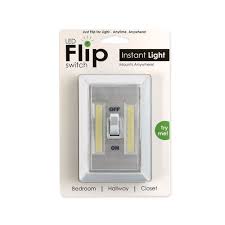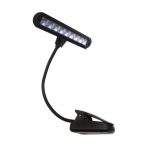Theatre directors and Drama teachers should be aware of the benefits of theatre lighting for their production for several reasons:
Enhancing the audience’s experience: Theatre lighting can create a particular mood or atmosphere for the audience, drawing them into the performance and enhancing their experience. It can also help to focus the audience’s attention on specific elements of the production, such as characters or set pieces, it can also help to hide elements.
Conveying emotions and themes: Lighting can be used to convey emotions and themes, such as joy, sorrow, fear, or love. Different colors, intensities, and angles of light can all be used to communicate these ideas to the audience.
Creating visual interest: A well-lit production can be visually stunning and captivating for the audience. It can add depth and dimension to the set and create a dynamic and visually interesting performance.
Highlighting actors’ performances: Lighting can also be used to highlight an actor’s performance, drawing attention to them and emphasizing their character’s emotions or actions.
Conveying time of day or location: Lighting can also help to establish the time of day or location of a scene or differentiate between different scenes or indicate a passage of time, creating a more immersive experience for the audience.
- Providing Safety and Visibility: Actors and backstage crew need adequate and appropriate lighting to be able to move safely around the stage, Musicians need to be able to read their sheet music at all times during a production.
Functions and Objectives of Stage Lighting
Theatre lighting helps set the Mood and Atmosphere of a show. A Director needs to have an overall mood for the play as well as moods for different scenes.
Selective visibility and choice of colour are important tools that can help achieve the desired mood or atmosphere.
Visibility allows us to see the actors and the set while Selective visibility can help make an actor stand out in the middle of a group of actors, or disappear into the shadows of a set.
Look at the color range section of the Lee Filters The Art of Light http://www.johnbarry.com.au/medias/LEE_Art_of_Light_Brochure.pdf for effect/color to help you select a filter color to help create a Mood.
Theatre lighting can help provide Visual Compositions in a production and establish a rhythm of visual movement. Scene changes can be lit with a blue backlight to allow actors to safely exit while backstage crew reset the stage. This reduces the use of the stage curtain while speeding up scene changes.
It can create a location or place, sometimes in conjunction with projections. When using projections on a stage you need to make sure there is no light spill on the projection. It can change the time of day, suggest a passage of time or change the weather conditions.
Theatre lighting can help to present the writers Production style in conjunction with the other production elements. The lighting is different for Drama, Comedy, Historical and Musical.


It is important to have a production meeting early in the rehearsal timetable so the scenic designer, costume designer, sound designer, stage manager and director can work as a team to achieve the desired end result.
Can the lighting design create scenes with the use of gobos or other effects that can simplify set design or speed us scene changes. Are there practical lights such as chandeliers or floor lamps required ?
The Properties of Natural Light
This part of the workshop is where we go outside to examine and become aware of the The Properties of Natural Light and how they relate to theatrical productions.
http://www.theatrelightingworkshops.com/the-properties-of-natural-light/
Properties of Light in Theatre Lighting
This part of the workshop is where we demonstrate the McCandless Method of theatre lighting to show how effective it is for drama.
Use this link to see details of theatre lights Luminaires
Profile Spots link to Profile Spots page
Fresnel lights
Back lights
Cyclorama lights
Side lights
Foot lights
Practical lights
Providing Safety and Visibility:
- Actors and backstage crew need adequate and appropriate lighting to be able to move safely around the stage. Blue (or Red) work lights need to be provided behind the set to allow actors and backstage crew to move around safely, including during blackouts. These can be permanent fixtures such as blue pin spots or led strip lighting. Do not use any globes with a glass envelope, such as blue party lights which are easily damaged, which present an electrocution risk. Use a snoot to stop the light spilling onto the stage and walls. It may be cheaper to buy budget RGBW LED PAR’s. During scene changes consider using blue backlighting to allow visibility on the stage. The cast and crew will be in silhouette so the audience will accept it to be a scene change. This scene change lighting can also avoid having to lower and raise the main curtain which reduces the time of the scene change. Another option is to use U/V lighting that is used in 6in1 LED PAR’s in conjunction with fluorescent tape markers for set spiking. Some U/V light has low level visible blue light.
- Musicians need to be able to read their sheet music at all times during a production. Ideal light is an LED Sconce light. If you try to use a stage light from above it is hard to control spill and shadows from the musicians on their music.



Page updated 11 February 2025